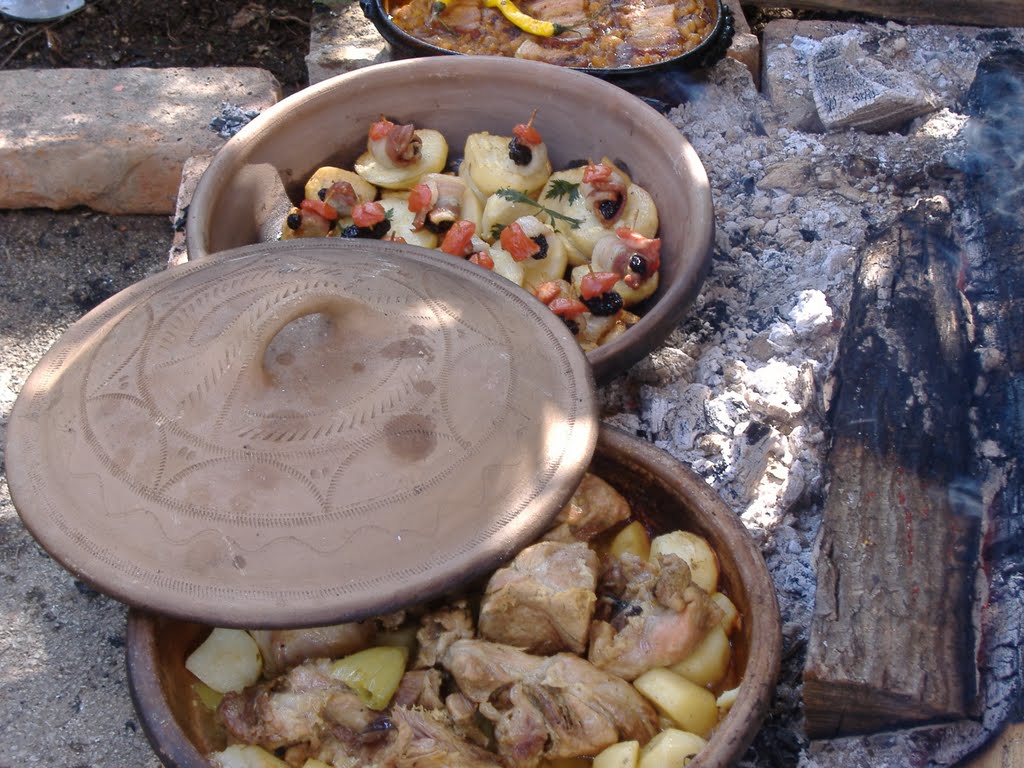The traditional dance which specificity lies in rarely harmonized dance and music phase has been performed for years with great love, devotion and only one goal – to keep Rumenka in its traditional form and to keep transferring it from generation to generation.
Due to interweaving and interference of different forms of cultural heritage, the origin and geographic locality where the specific tradition has been created is often hard to define.
 That is something that doesn’t separate “Rumenka” from other traditional dances which history date far into the past.
That is something that doesn’t separate “Rumenka” from other traditional dances which history date far into the past.
“Something that can be said with security is that “Rumenka” was mostly represented in the area of Golak and southern towards the Niško Polje and Nišava River, as well as in the vicinity of Soko Banja. It could have also be seen in the parts of Eastern Serbia and it has been outspread to Northeast Serbia, precisely to the Danube River in the North”, explains Simona Nešić from the KOLO Ensemble.
Areas, and even small places like towns and villages, had affected the different variants and patterns of the dance. Because of that, there are several ways in which the dance can be performed today. The main form was an open circle of dancers with the featured role of the first and the last dancer– kolovođa and zavrckolo, and was performed in 8 octaves, 10-tact and 16-tact pattern.
The specifity of “Rumenka” lies in 2 segments: the first one is that the dance and music phases are often non-harmonized, and the other one is the characteristic dance style, particularly noticed in the area of Soko Banja, which today is called “podvoženje”.
In spite of the beauty as well as the huge cultural and artistic significance, this traditional dance can be heard and seen rarely. Namely, entirely because of the large number of Communities and schools of folklore, “Rumenka” is still alive.
“The opportunities for performing the traditional dances are low, and often is the case of not seeing the traditional dance on the weddings and other celebrations. Big cities and urban settlements are leaders in it and for that reason the dance is often seen on the countryside and in rural environments”, said Nešić for Serbia.com.
The worrying fact is that more and more rarely can be seen the dance patterns which had existed once. And for that reason, the dance is performed differently than the original version very often. The most important task of the KOLO Ensemble and other Communities is and it should be that “Rumenka” and similar traditional dances remain preserved and in authentic shape, form and music.
Ensemble KOLO and “Rumenka” perform all around the world
Concerts in Toronto, Hamilton, Cleveland, Milwaukee and Chicago are some of the many performances of the KOLO Ensemble through which they bring closer the cultural heritage of Serbia to diaspora and other visitors. This organization had performed in Trieste in June, 2009, within the Days of Serbs at the central town square in front of more than 5000 visitors.
Great success represent performances of the KOLO Ensemble in Australia in 2002 and 2003 under the organization of Australian and New Zealand eparchy of Serbian Orthodox Church, Ministry of Culture and Ministry of Diaspora. Performances are realized in collaboration with our societies in diaspora with the support of Ministry of Diaspora and Ministry of Culture.



























